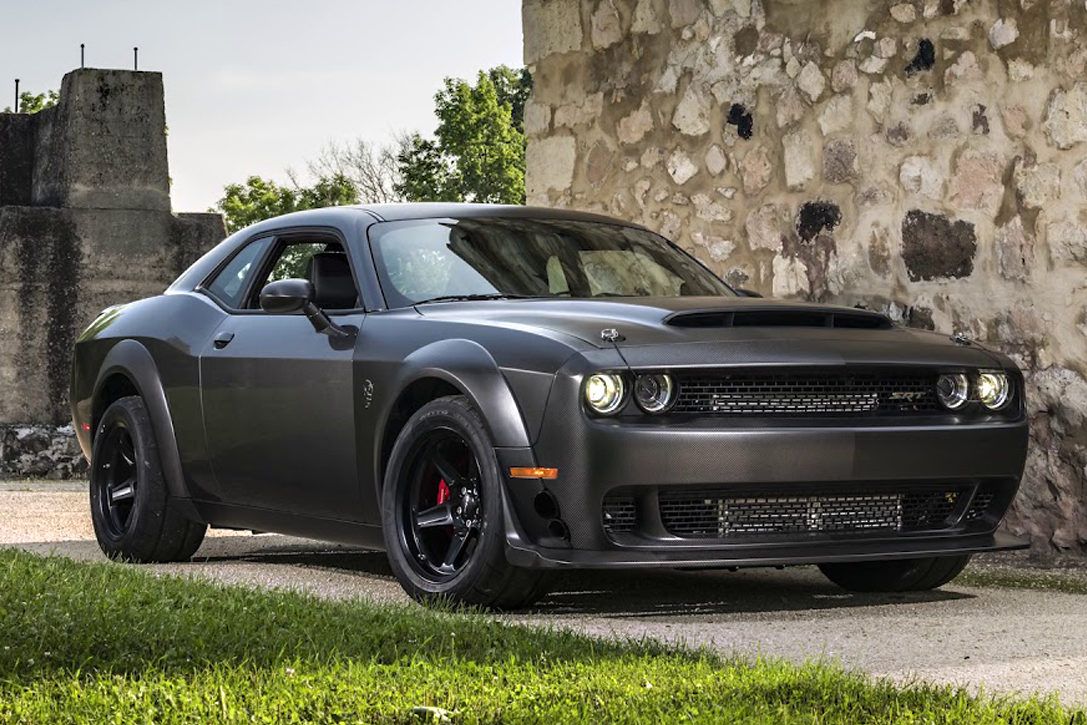
Grand nationals are races designed to highlight America's best muscle cars. Two examples of these vehicles are the Chevrolet Impala SS 409 and Chevelle SS 444. Each one uses a 415-horsepower 6.2-liter V8 motor. Inside you will find comfortable sports seats and the SS emblem. The SS logo, which is a distinct part of every car's design and one of the most famous symbols of Grand National, is found inside.
Chevrolet Impala SS 409
The Chevrolet Impala SS had a small-block engine. This engine was the first to feature in a front wheel-drive Chevrolet sedan since 1996 Caprice. This engine produced 303 horsepower and was equipped with Active Fuel Management. The SS was a luxurious sports car with an athletic appearance that allowed drivers to enjoy a wide variety of driving options. The SS was available in a coupe or two-door convertible.

Grand National muscle car
The Buick Grand Nat is one of America's finest muscle cars. Its turbocharged 3.8-liter V-6 put Corvettes to shame, and its automatic transmission made it a perfect muscle car. While the Buick GNX didn't live up to the standards of a true muscle car, it was still one of the coolest cars to come out of the Buick factory since the GNX era. It's still very expensive to purchase one, thirty years later.
Chevrolet Chevelle SS 454
The 1972 Chevrolet Chevelle SS featured a special instrument cluster. The standard instrument cluster contained a speedometer as well as a large fuel gauge. It was accessible through a small opening. The special instrument panel contained a tachometer as well as a clock. The fuel gauge was moved to the outside edges of the instrument panel. Other options included Quad headlights and Stereo Stripes.
1970 Chevy Chevelle SS
The 1970 Chevy Chevelle SSS interior is reminiscent the 1960s muscle car with its bench seat design and central console. Despite its similarities, the 1970 Chevelle SS is unique, with its large, circular gauges and lower valance. Its chrome bumpers are optional and add flair and character. This car truly embodies classic muscle car styling. Here are some key features about the 1970 Chevy Chevelle Super Sport:
1969 Dodge Charger
In 1968, the Dodge Charger was a legendary muscle car, but it was time to take it mainstream. Richard Sias (famous Dodge designer) designed a large, hourglass-shaped machine with a broad stance. The 1969 Dodge Charger had a two-door hardtop and a wheelbase width of 117inches and a length length of 220inches. It sold 96.100 vehicles. Also offered was a road/track performance pack.

1969 1/2 Dodge Super Bee A-12
This is one the most well-known muscle cars ever made. The 1969 1/2 Dodge Super Bee is an amazing example of this style. It was manufactured from 1968 to 1971 and featured three Mopar V8 engine options. The Magnum, the 7.2-liter Six-Pack, and the legendary 7.0-liter Hemi were all available on this model. The car is very rare but it has a Ramcharger supercharged engine and front-wheel drives.
FAQ
What qualifications do you need to be a mechanic?
To become a mechanic, you'll need to pass a series of exams. These exams include:
-
A general knowledge exam
-
A practical exam
-
An apprenticeship test
These tests are designed for you to understand the basic concepts and principles of mechanics before your start as a technician.
You'll be eligible for work as a mechanic after you have passed the tests. You will still need to complete an apprenticeship. This will involve trade training.
To fully understand the mechanics of vehicle repairs, you'll need workshops and classes. It will be necessary to work alongside experienced mechanics.
A mechanic must be highly focused and attentive to detail in order to succeed. Repairs to vehicles require you to pay attention to every detail.
To be a successful mechanic, you will need patience and perseverance. If you don’t like following directions, then this career path may not suit you.
If you enjoy cars and fixing them, this job could be a good fit for you.
What should I know about car mechanics
For an auto mechanic job, you don’t have to be an expert in cars. You only need to know how to fix them. Most people begin by changing brake pads and tires, before moving on to more complicated repairs.
You need to be able read and comprehend diagrams, follow written instructions and adhere to basic principles of good practice. You'll also need to be able to judge whether parts need replacing or repairing.
It is important to understand that vehicle repairs should only be attempted by those who have received the proper training. This is especially true if you deal with expensive components such as engines or transmissions.
Although you won't be required to know much about cars you should have a solid understanding of the fundamentals and principles of mechanical engineering. This is how you understand the mechanisms behind engines and brakes.
It is important to realize that you must be ready for all types of situations. For example, you may find yourself working on a vehicle that has been involved in a serious accident. You'll also need experience dealing with breakdowns and accidents.
You must also be willing to learn quickly. In order to be able diagnose and fix problems, you will also need to know how to do simple maintenance tasks such tightening bolts.
What jobs are available for car mechanics?
For car mechanics, there are three main areas for employment:
-
Automotive repair shops
-
Dealerships
-
Independent garages
Automotive repair shops
It's where most people start to think about becoming a mechanic. It's actually the easiest way to start. Either work for someone else's shop or you can start your own.
If you decide to work at a shop, you'll need to apply to join a union. Once you're accepted into the union, you'll receive training from the union.
After the training, you will be ready to go and start your job.
If you decide to open your own garage, you'll need to register with the government. After you have registered, you will need to meet certain standards.
You will receive a license to run your garage once you have registered.
Your license allows for minor repairs and spare parts sales. It won't permit you to fix serious engine problems.
In addition to selling spare parts, you'll also be expected to offer advice and guidance to customers.
Dealership jobs
Most dealerships employ mechanics that specialize in one aspect of the vehicle. They may be trained to replace or repair tires, or they may specialize in brakes.
However, some dealerships also hire general mechanics who can handle all aspects of car repairs.
These positions often require applicants that they undergo special training before being allowed work. This allows employers to select the most qualified candidates for their roles.
Some dealerships even recruit graduates straight from university. These graduates already have a basic understanding of mechanical engineering, so they are able to learn all about cars.
Independent garages
Independent garages are not associated with any one dealership. Instead, independent garages tend to concentrate on providing high-quality services.
Independent garages don't have to be associated with any particular company. This allows them to offer higher wages. This means that these jobs are usually more lucrative than those at dealerships.
Independent garages don't necessarily make for better work environments. Many business owners prefer to own their businesses and not delegate the responsibility to others.
You may find yourself working for long hours and not having control over the day.
Expect to earn lower salaries than if you were working in a dealership.
It's possible to switch between jobs. If you want to work at a dealership, then you simply need to ask your current employer if he would consider hiring you as a mechanic instead.
Alternativly, you can apply directly to the garage owner if you are interested in working at an independent garage.
The bad news is that finding a new job isn't always easy. There are plenty of other factors that influence how much you earn.
Consider, for example, what type of vehicle you are repairing and whether additional labor charges will apply.
Statistics
- Apprentice mechanics earn significantly less hourly than mechanics who have completed training, with a median wage of approximately $14.50 an hour, according to PayScale. (jobhero.com)
- According to the BLS, total auto technician employment is expected to exceed 705,000 by 2030. (uti.edu)
- According to the BLS, the median annual salary for automotive service technicians and mechanics in the United States was $44,050 in May 2020. (uti.edu)
External Links
How To
How to diagnose your vehicle properly for repair
First, look at the symptoms of your car to determine if it needs repair. These steps will help you diagnose your car properly.
-
Check engine lights. Make sure to check all dashboard indicators like the engine light indicator (oil pressure gauge), the battery indicator (battery light indicator), and the RPM indicator (rpm gauge). You may have a problem with your vehicle if any of the indicators are flashing for more than a few days.
-
Inspect the tire treads. If the tires are worn out, they could cause problems with handling and braking. Also, inspect the treads of your wheels. They should look clean and be smooth. It is best to take off the wheels and remove them. To check the condition of your treads, use a flashlight.
-
Observe the brake fluid level. It is important to keep track of how much brake fluid you have in your car. This ensures that your brakes work properly. Low brake fluid levels can cause brake failure when you apply pressure.
-
The suspension system should be tested. The suspension system in vehicles absorbs vibrations and shocks. It improves control and allows for smoother accelerations or decelerations. If your vehicle has a suspension problem, it might feel wobbly or shake uncontrollably. Try putting some weight on your front or rear axle to determine if you have a suspension problem.
-
Examine the steering wheel. Steering columns connect the steering wheels to other parts of the vehicle. Sometimes, steering columns are damaged by accidents. It is recommended to replace any steering column that feels loose, or shakey.
-
Observe the exhaust pipes. The exhaust pipe helps move gases from a combustion chamber into the atmosphere. Exhaust pipes that are cracked or leaking can allow harmful fumes to enter your cabin. If your tailpipe bends, it is important to fix it immediately.
-
Check under the hood. To check for unusualities, look under the hood. Leakage of fluids in your engine could indicate that it is leaking. Also, professional technicians should be called if you detect an unusual smell coming out of your engine compartment.
-
Check the air filter. The vehicle's outside environment may cause the air filter to collect dust and debris. Vehicles that have a dirty air filter will not run well. Replace your air filter regularly.
-
Make sure you check the fan belt. The fan belt that connects your vehicle to the transmission is called the engine fan belt. If the fan belt is damaged, the engine won’t turn. The process of replacing the belt is straightforward. You will need a screwdriver, pliers and a pair of pliers.
-
Make sure you inspect the radiator hoses and hoses. The radiator hose is used to carry water from the radiator to your engine. If the hose becomes damaged or cracked, hot liquid can be emitted onto the engine. The hose can be repaired with a pair or needle-nosepliers, and a wire brush.
-
Check the windshield wipers. Windshield wipers work by using electricity to remove rain and snow. If they stop functioning, they can leave streaks in your window glass. You can fix the problem by changing the washer fluid.
-
The battery cables should be checked. Your car's electrical system is powered by batteries. If you are replacing batteries, disconnect the negative cord first. Failure to do so can damage your alternator.
-
Check the headlights. Headlights illuminate the road ahead of you. They can make it difficult to see if they stop working. To determine if your bulbs are out of date, check them.
-
Be sure to check the lights. When you approach them at night, the lights warn other drivers. One that doesn't work could cause you to be distracted, and possibly lead to an injury.
-
Check the brakes. Before you get in a car accident, your brakes will be slowing down your vehicle. If your brakes aren't working properly, you may lose control and crash into other cars.
-
Change your oil. The oil keeps your engine well lubricated. It protects metal parts and prevents them from wearing too quickly. It is recommended that you change your oil at least once per month.